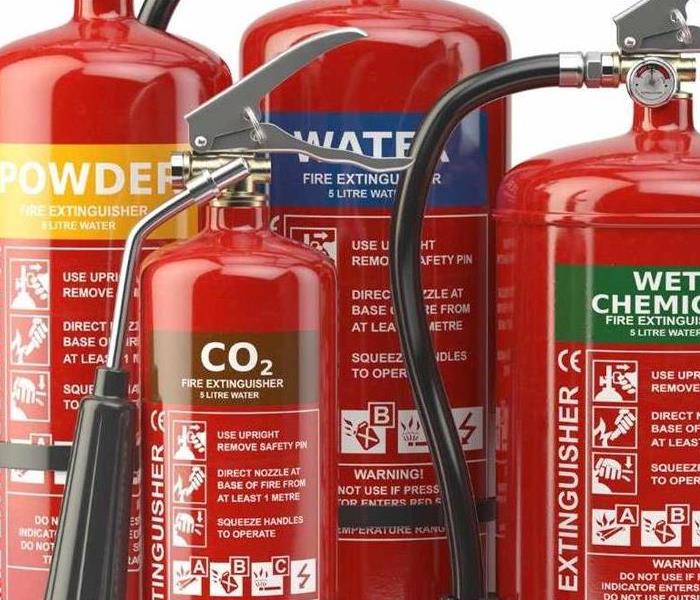Fire Extinguishers
6/24/2019 (Permalink)
First of all in case of a fire stay calm and alert everyone and get out of the building. Used properly, a portable fire extinguisher can save lives and property by putting out a small fire or containing it until the fire department arrives.
First of all in case of a fire stay calm and alert everyone and get out of the building.
1. Call the fire department.
2. Then, if the fire is small, use the appropriate extinguisher.
ONLY FIGHT THE FIRE IF:
1. Everyone is out.
2. The fire is small and confined.
3. You can fight the fire with your back to a safe escape route.
4. You effectively know how to use a fire extinguisher.
5. The extinguisher is rated for the type of fire.
DO NOT FIGHT THE FIRE IF:
1. The fire is spreading beyond immediate area.
2. The fire could block your escape route.
3. You do not know how to use the fire extinguisher.
WHERE TO LOCATE FIRE EXTINGUISHER:
1. A home portable extinguisher is recommended for each level of your home.
2. A fire extinguisher should also be located in your garage, shop or work area, and each personal vehicle.
3. The extinguisher should be placed near an exit and in full view so they can be reached quickly and easily. If you make the decision to use it, you will be near an exit to escape if necessary.
4. For maximum protection in kitchen and garage fires, a portable fire extinguisher that will extinguish a class A, B and C fire is recommended.
THE THREE CLASSES OF FIRE:
Class A - ordinary combustibles, such as wood, cloth, paper, rubbish, rubber and plastics.
Class B - Flammable liquids, such as gasoline, oil, grease , oil based paint, lacquer and flammable gas.
Class C - energized electrical equipment, including wiring, fuse boxes, circuit breakers, machinery and appliances.
HOW TO USE EXTINGUISHER:
Read the instructions, but in case of emergency, always remember this
P A S S
P. Pull the pin to unlock the handle.
A. Aim low at the base of the fire.
S. Squeeze the handle.
S. Sweep the unit from side to side.
PROPER MAINTENANCE:
1. Read the owners manual for proper instructions on maintenance.
2. Check gauge monthly for pressure drops.
3. Check for dents, punctures and corrosion along the body.
4. Check for chipping or cracking on the head and nozzle.
Always be sure to notify the Fire Dept. of the fire no matter how small so they can inspect the site and be sure the fire is extinguished.





 24/7 Emergency Service
24/7 Emergency Service
